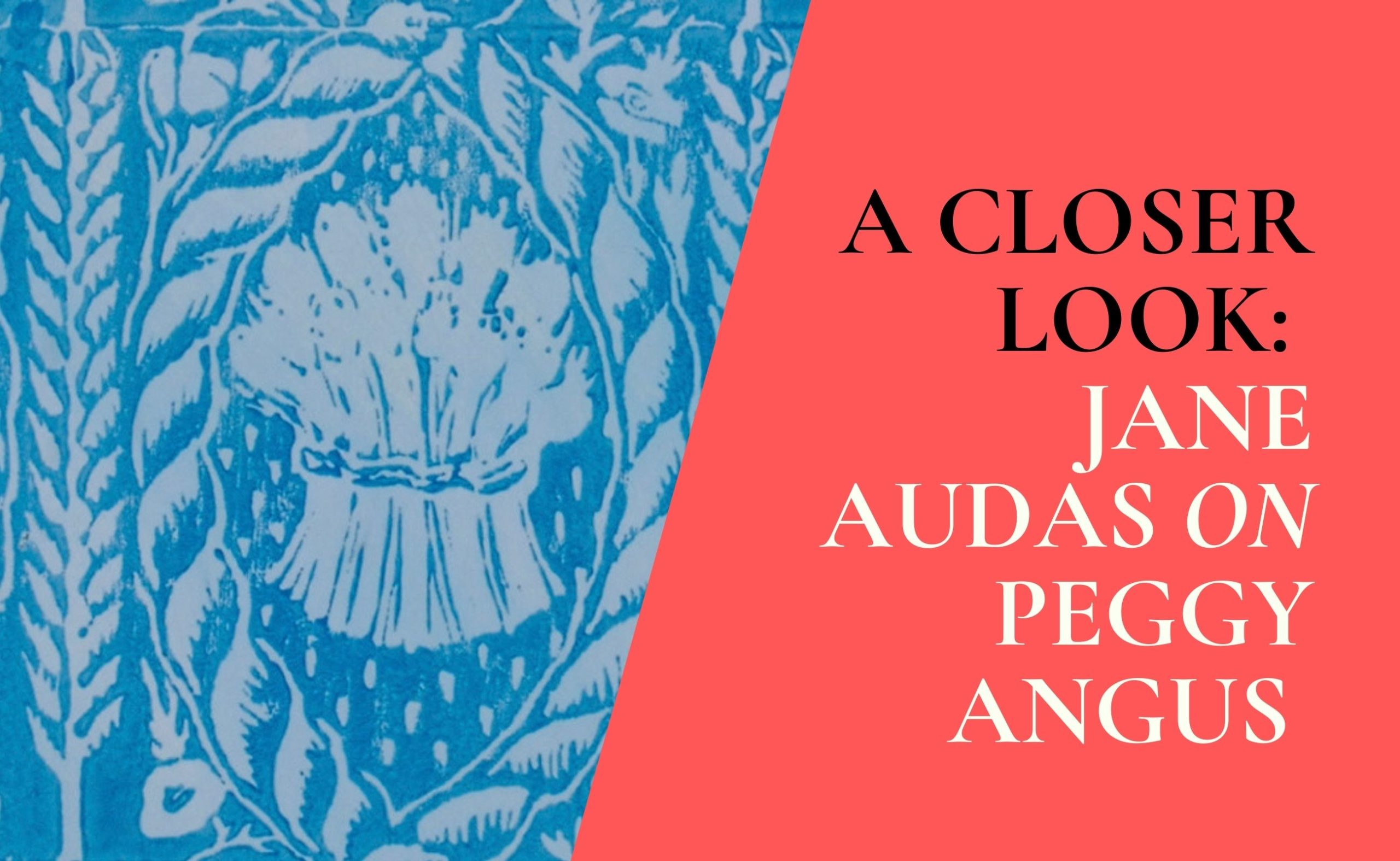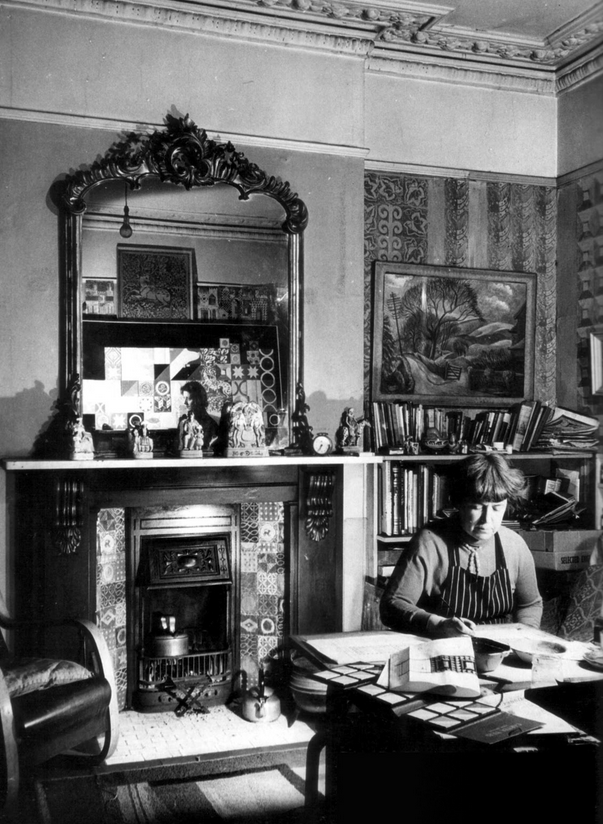
Peggy Angus (1904-1993) had a varied and esoteric professional career, matched by restless wanderlust in her personal life.
Initially a student of fine art, Peggy Angus attended the Royal College of Art (RCA) on a painting scholarship in 1922, aged 17. But she soon transferred over to the Design School, where fellow students included Eric Ravilious and Edward Bawden. She eventually excelled at printed pattern design, particularly of tiles and wallpapers.
After the RCA Angus took up teaching to earn a steady income. She got jobs teaching art in Nuneaton, then Eastbourne and eventually came back to London to teach in Hampstead in the early 1930s. Angus picked up her RCA friendships at this point, in particular those with Eric Ravilious and Edward Bawden and their circle, living in Great Bardfield. It was at Bawden’s house there that Angus first saw his lino cut wallpapers and various ingenious wall coverings.
North London Collegiate School
By the end of the war Angus had a job at her old school, the North London Collegiate School in Camden. Part of her teaching there was lino print experiments, where her class would make potato prints and then copy them on to lino and print lengths of wallpaper on newsprint to decorate the walls of the school. Later Angus would say that she ‘learnt pattern designing by teaching juniors potato cuts.’

Peggy Angus working on tile designs, with a book of Carter & Co samples at her elbow, probably at her home 122 Adelaide Road. Photograph courtesy the Peggy Angus archive, The Keep, East Sussex Record Office.
Peggy Angus, tile designer
Around this time a visitor (who turned out to be FRS Yorke, an architectural writer) saw some lino print experiments in Angus’s house. His interest encouraged her to pursue getting her designs properly translated on to tiles – working at Carter’s factory in Poole.
The factory would soon employ her on a retainer and make much of her tile designs for them. She executed striking commissions for tiled walls in schools and universities. Angus’s own wallpaper designs grew out of her tile work; her wallpaper was initially lining paper printed to show how repeat tile motifs might work.
Wallpaper printing
Angus’s first wallpapers were simple geometric repeat shapes. The process of production involved painting lengths of lining paper with an initial layer of emulsion paint. After this dried, a pattern was printed over it, in a different colour, using a lino cut block. The over-printing continued until the length was covered, sometimes rotating the block to break the pattern. The hand printing process gave subtle discrepancies to the wallpaper, making the pattern come alive on the paper.
Angus used her ex-pupils, students and friends to help her print the unwieldy wallpapers. Carolyn Trant (who met Peggy at age 11) would go on to print Angus’s wallpapers whilst an art student at the Slade. She describes the technique used to make the wallpapers in this short film:
Bespoke wallpaper by Peggy Angus
Despite winning a competition at the wallpaper manufacturers Sanderson in 1960, Angus had little success with their commercially produced paper. So she began to expand her bespoke hand printed wallpaper business, billed as: ‘Peggy Angus wall patterns’ and further described in a tone of voice that was all Angus:
“For textile and wallpaper manufacturers small individual runs are uneconomic – the insatiable machines must always be kept turning on gargantuan assignments. Yet how nearly impossible it is to find the right design in the pattern book.
An Angus Wallpattern can be selected by the client from the fount of blocks in stock, or a special block cut and the whole printed in colours of his choice. No two prints, even from the same block, are exactly alike. The subtle irregularity in the pressure of the printers hand can never be matched by the machine.”
Angus continued to print wallpapers to commission through to the end of her career, making her for her ‘patrons’ and friends, and friends of friends. She would design hundreds of wallpapers over her career, sometimes simple repeats, sometimes with figurative vignettes incorporated into them. Some of her wallpapers are still in production today and look as much the thing as they ever did.
Jane Audas is a freelance digital producer, writer and curator.